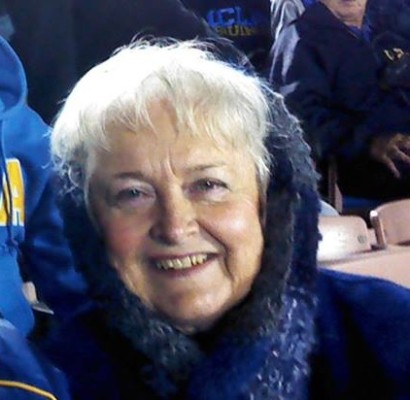
Introduction | Teaching Interests | Research | Recent Publications | Recent Presentations | Educational Background
Introduction
Dr. Paula Arvedson is a Professor in the Division of Curriculum and Instruction at Cal State L.A. and a Fulbright Scholar.
Teaching Interests
I enjoy all the classes I teach. My favorites are "The Teaching Profession: Preparing the Urban Educator" (EDCI 300), "Integrated Math and Science Methodological Content Literacy" (EDCI 525), "Curriculum and Teaching of Mathematics (K-8)" (EDEL 417), and "Curriculum and Teaching of Social Science (K-8)" (EDEL 419). I have fun in my classes, helping future teachers connect theory to real world practice.
(new knowledge bases)
My favorite course was EDCI 525: Integrated Mathematics and Science Methodological Content Literacy. With today's focus on STEM and our society's need for collaborative teachers, I see this course as the most important in the LAUTR program. There is also very little written about this area of research in teaching; so, together the students and I wrote a textbook for future LAUTR students. I continue to use this in planning ways to integrate STEM at all grade levels.
(use of technology)
I continue to improve courses I have taught for many years. EDEL 419 - Curriculum and Teaching of Social Science - was one of the first courses I taught in the Charter College of Education. Over the years I have used WebCT, Blackboard, and Moodle as supplements to the course. At one time, I tried it as a hybrid (half online, half face-to-face). As stated by Dr. Keane, emeritus faculty in mathematics education, “As a person who has emphasized the use of technology in teaching and learning, I think Dr. Arvedson is doing an outstanding job in this area.”
Research
I continue to lead research in high school student teams' use of satellite data to make sense of global climate change (Multinational Youth Studying Practical Applications of Climatic Events). This program was created and designed by me in response to student and teacher needs at the Satellites & Education Conference. I connect our credential candidate students with this program as an example of collaborative integration of STEM at all levels of public school. M.Y. S.P.A.C.E. is an international collaboration of high school students engaged in self-selected research projects on the local impact of global environmental issues. Students work with their own, trained (I train them), Teacher Leaders at their school sites using both locally generated and satellite-based data with support from the National Oceanic and Atmospheric Administration (NOAA) and the National Aeronautics and Space Administration (NASA). Teams from each school meet at the annual Satellites & Education Conference to discover global trends in their collective data and present their findings. Students learn and practice techniques of scientific investigation; methods of data processing, analysis and interpretation; leadership; and effective communication. They work with NOAA and NASA scientists and engineers, experience university campus life, and can apply for special internships at Cal State L.A. I created this program in 2002 and continue to direct this program and train the teachers who must have a letter of support from their principals to enter the program.
Three other major areas of research are: 1) mathematical understanding by young children with language impairments, 2) the impact of cohorts in teacher education, and 3) a comparison of teacher training in South Africa and the United States, specifically California. The numerical understanding in young children research has been published in several journals. The cohorts in teacher education article is in review, and the comparison of South Africa and the United States is a collaborative effort with colleagues in South Africa and is still in the process of being written.
Arvedson, P. (2013). Language and Math in Early Childhood Education: Implications for Math Instruction for Children with Specific Language Impairment. International Journal of Early Childhood Education, 20, 121-132.
Arvedson, P. (2012, December). Using movement to teach geometry. Learning & Teaching Mathematics: A Journal of AMESA, 13, 26-27.
Arvedson, P. & Lee, D. (2013). Young Meteorologist Program. California Science Teachers Association's California Science Education Conference, October 27-29, 2013.
Arvedson, J. & Arvedson, P.. (2013). Tracking Hurricane Sandy. California Science Teachers Association's California Science Education Conference, October 27-29, 2013.
Arvedson, J. & Arvedson, P. (2013). Fishing Via Satellite. California Science Teachers Association's California Science Education Conference, October 27-29, 2013.
Arvedson, J. & Arvedson, P. (2013). Electromagnetic Spectrum and Satellites: Designing Antennas for Satellite Reception. California Science Teachers Association's California Science Education Conference, October 27-29, 2013.
Arvedson, P. & Rosenberg, T. (2012). Teaching with models: examples from the teaching of fractions. The Association for Mathematics Education of South Africa Regional Conference, May 5, 2012.
Arvedson, P. (2012). Teaching Geometry with Movement in Primary and Secondary Schools. The Association for Mathematics Education of South Africa Regional Conference, May 5, 2012.
Educational Background
1999 PhD, Joint Doctoral Program: California State University at Los Angeles - University of California at Los Angeles.
1984 MA, Child Development, California State University at Los Angeles.
1982 BA, Child Development, California State University at Los Angeles.
Minor: Mathematics. Graduated Magna Cum Laude.